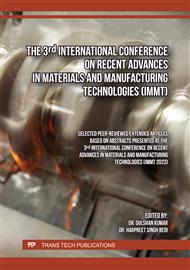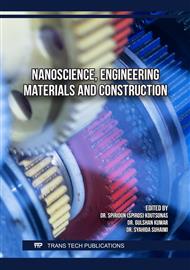p.3
p.11
p.21
p.29
p.39
p.51
p.59
p.79
Analytical Study of Single-Walled Carbon Nanotubes Using Strain Gradient Timoshenko Nanobeam
Abstract:
Beams find extensive applications in Nanoelectromechanical systems (NEMS) and Microelectromechanical systems (MEMS). The mechanical characteristics of these microstructures are significantly influenced by both their inherent microstructure and the forces acting at the micro/nano scales. Classical continuum theories fall short in capturing these small-scale effects due to the absence of a length scale parameter in their constitutive relations. To address this limitation, the existing literature primarily relies on the stress gradient nonlocal approach, which, however, has been found flawed and its universal applicability questioned in various scenarios. Therefore, the authors have endeavored to emphasize the strain gradient nonlocal approach, which has been relatively less explored. In this study, carbon nanotubes are modeled using the isotropic Timoshenko beam theory. To introduce the small-scale size effect into the model, the second-order negative strain gradient theory (NSGT) is employed. The Euler-Lagrange differential equations of motion and their corresponding boundary conditions are derived through Hamilton's principle. Analytical solutions are developed for static bending under uniformly distributed transverse load and free vibration problems using Navier's approach. Mathematical results are presented to validate the proposed solutions. Both analyses reveal that the nonlocal effect implemented in this study stiffens the structures, resulting in reduced static deflection and increased natural frequencies. It is noteworthy that beams with dimensions comparable to microstructural length scales exhibit a significant nonlocal effect, which diminishes as the structure's size increases. Additionally, the response obtained using the Timoshenko beam model is softer in comparison to the Euler-Bernoulli model due to the consideration of shear deformation.
Info:
Periodical:
Pages:
29-35
Citation:
Online since:
April 2025
Authors:
Price:
Сopyright:
© 2025 Trans Tech Publications Ltd. All Rights Reserved
Share:
Citation:



